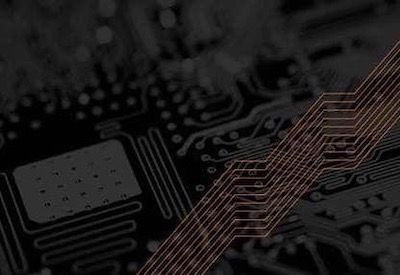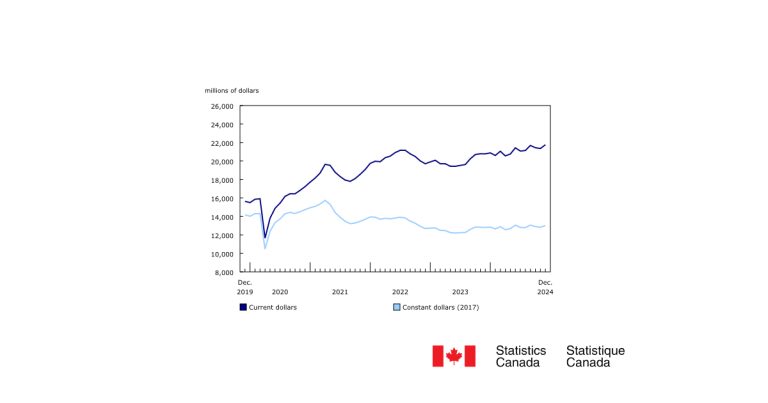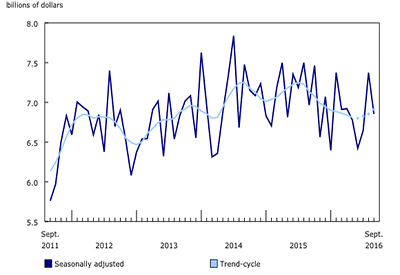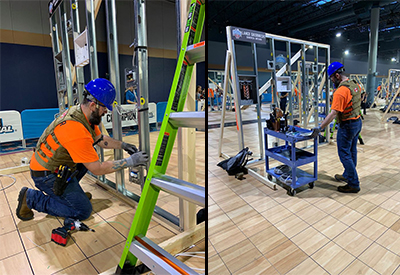Circuit Protection Design, Products and Methods

Aug 30, 2020
Due to the relative unpredictability of today’s technology, circuit protection is an absolute must in designs that need to be reliable. This article will look at circuit protection as a whole, and how different types of damage can be mitigated.
Circuit protection: crucial for devices and components
When designing circuits, we often like to think that the world provides us an ideal setting, wherein our power sources are noise free, capacitors don’t have resistance, and logic levels rise and fall instantaneously. However, the real world is far from ideal. Power sources can be very noisy (especially DC/DC converters), capacitors often have equivalent series resistance, and logic levels generally come with all kinds of timing issues.
Even if we consider these real-world influences on components and devices, there is one area that many designers typically forget to address — circuit protection. A circuit built on a breadboard or a prototype PCB may work well under laboratory conditions, but the real world doesn’t necessarily offer those ideal conditions, and anyone who has dealt with static sensitive components knows exactly where this is going. Voltage spikes from surges can damage regulators, while static shocks from users can kill a microcontroller without any notice. Since designers can never be too sure what their circuit may experience, it is considered good practice to protect circuits from as many different sources of damage as possible.
Typical sources of circuit damage
While there are many sources of potential damage, the major ones include electrostatic discharge, inductor flyback, and mains supply surges.
Electrostatic discharge is static discharge. It is by far one of the biggest killers of CMOS-based devices. Static discharges can come from a range of different sources, but one of the more common sources is human beings. Humans have a habit of covering their bodies with material and attaching rubber to the soles of their feet. The result is that as they move around, the material and rubber can rub against the skin and other surfaces; this, in turn, builds static charge. When a statically charged person touches an electronic circuit, there is considerable risk that charge can be transferred from the person to the circuit, therefore subjecting the circuit to many thousands of volts. While the amount of energy transferred to the circuit is very small, the high voltage can easily cause dielectric breakdown of MOS-based technology (such as transistors, regulators, microcontrollers, etc.). Other technologies based on barriers and junctions (such as BJTs and FETs) are less affected by static shock, but there is still the risk that they can be damaged.
Inductor flyback is a phenomenon that occurs when a current travelling through an inductive element (such as a coil or choke) is suddenly changed. When this happens, the energy stored in the magnetic field needs to be released. The collapsing of the magnetic field causes a voltage to be induced (but in the opposite polarity to the voltage source to the inductor). This induced voltage is called “back EMF” and is very dangerous for sensitive circuits such as those based on silicon. Back EMF from even small inductors can be many hundreds of volts. Common sources of back EMF include chokes, motors, and transformers.
Mains, also known as grid power supply surges, originate from several sources, including power station failure, substation failure, and lightning. A mains surge is where a large voltage spike is injected into the electrical grid. This sudden spike can affect almost every device connected to the grid. A classic example of voltage spikes affecting the grid, is power cuts during an electrical storm. A lightning bolt can hit a pylon, which causes a surge throughout the grid. Substations can either be damaged by the surge, whereupon the power it is providing gets cut, or it can detect the surge and then intentionally cut the power to prevent damage to consumers down the line. Surges can also arise from power reconnection, where an area that is without power is suddenly reconnected to the grid.
Circuit protection methods
So, we can see that there are many different potential sources of damage, but how can we protect our circuits from such damage?
1. Zener diodes / series limiting resistors
Zener diodes are one of the most commonly used circuit protective device, thanks to their ability to clamp voltage. If used in forward-biased mode, they will clamp voltages to around 0.6 V like any other silicon diode; however, unlike silicon diodes, when used in reverse bias mode they will clamp a voltage a specific value.
For example, a 5V1 Zener diode will clamp voltages in reverse bias mode to 5.1 V, such that if the voltage across the diode exceeds 5.1 V, the voltage cannot get any higher. These diodes are often used in conjunction with a series limiting resistor so that the current through the Zener cannot exceed its limit. The series limiting resistor can also protect the circuit from current spikes. It should be noted, though, that series limiting resistors can affect the speed performance of a circuit and are more applicable to high impedance inputs.

2. Choke: inductor
A choke is a special pair of inductors that can resist sudden changes in current. For example, a voltage spike from the electrical grid can find its way into the power input of a sensitive circuit. If a choke is placed in series with the power input, then the voltage spike (which will also cause a current spike, I, is proportional to voltage, V), is reduced and the rest of the circuit is less exposed to the surge.
3. Decoupling capacitors
Spikes in voltages and current are not the only dangers a circuit can face. Another source of potential damage is from brownouts, which refer to a sudden failure in the power supply and can last for several hundred milliseconds. While this is not particularly a problem for simple devices such as fans and lights, it can be highly detrimental for devices relying on digital logic, such as computers, laptops, and security systems.
While large brownouts that last for more than half a second are very hard to combat (often requiring a secondary backup power supply), short brownouts that may be caused by devices switching on (such as a radio module) can be solved with the use of decoupling capacitors. A decoupling capacitor is nothing more than a large value capacitor that stays charged under normal operation but can pump its energy back into a circuit during brownouts to maintain the supply voltage. Such capacitors are often placed before power handling circuitry like linear regulators for microcontrollers. This ensure that the voltage to the microcontroller can be properly maintained (remember that many regulators can accept a wide input voltage range but many microcontrollers cannot handle large voltage deviances). Other uses for decoupling capacitors include circuit protection from noise injected into the power supply by other switching devices, including DC/DC converters, processors, sensors, radio modules, and high-speed digital circuitry. A good rule of thumb in these cases is to give each power pin on a microcontroller its own dedicated decoupling capacitor that sits across the microcontrollers power supply.
4. Fuse
Many circuit protection techniques are often concerned with outside effects, but sometimes circuits need to be protected from themselves. One classic example of self-protection is short circuit protection with the use of a fuse. While not all circuits suffer from this problem, some designs may incorporate circuitry that has the potential to draw large amounts of current during fault conditions.
For example, a push-pull amplifier may have the capability to be connected to external devices but may also be reliant on that device having a minimum amount of impedance. In this situation, the push-pull is vulnerable to being shorted. And while the amplifier may be able to handle the current, other components in the circuit may not. In this scenario fuses can be used in series with power supplies, inputs, and outputs to ensure that the circuit is not able to draw dangerous amounts of current. Many fuse types exist, with wire fuses being useful for mains powered devices, while small resettable fuses are more appropriate for digital circuits such as Arduinos.
5. Protection diodes
Protection diodes are critical in designs where inductor fly back can occur from components such as coils and motors. While motors and coils themselves are not at risk from damage, the issue arises when these components inject their back EMF into a circuit containing sensitive circuitry such as microcontrollers, transistors, and sensors. Removing back EMF is a very easy task and only requires a single diode placed in parallel with the device that is expected to produce the back EMF. It is important to note that this only works for DC setups as the diode is placed in parallel with the inductive element but in reverse bias with the inductive elements’ voltage supply. When the supply to the inductive element is turned off, the back EMF goes through the diode and is kept away from other components in the circuit.
Circuit protection products
While discrete components can be used for circuit protection, there are also specific components on the market that incorporate dedicated circuitry for just this task. Let’s review a few examples of components that you can use for circuit protection.
1. Diode matrix packages
Diode matrix packages incorporate multiple diodes into a single package that can be used for a wide range of purposes. One of their more popular uses is protecting the pins of USB connectors (D+ and D- for example) from external electrostatic discharge. Examples of diode matrix packages include the NZQA5V6AXV5 from ON Semiconductor, which incorporates four Zener diodes with a common connection, and Texas Instruments’ TPD3E001, which incorporates seven diodes, and is specifically for protecting USB ports as well as providing low capacitance channels.
2. Transient voltage suppressor diodes
These diode types are specifically aimed at large voltage swings and are useful for protecting individual circuit connections as well as for use as back EMF protection. One example of a suppressor diode would be Diode Incorporated’s SMAJ33A-13-F, which is capable of dissipating 400 W of peak power, has a fast response time, and can conduct as much as 40 A of peak current. Another example of a suppression diode would be the 5KP100A-E3/54 from Vishay, which is capable of peak pulse power dissipation of 5,000 W, thereby protecting a circuit long enough so the main fuse/breaker can disconnect power.
3. Resettable fuses
Resettable fuses are components that can prevent damage to circuits in short circuit conditions. However, unlike typical fuses which, once blown, require replacement. Resettable fuses do not. These devices are typically of the PTC type, which stands for positive temperature coefficient. Resettable fuses rely on their temperature increases as the current through them increases. The increase in temperature increases the resistance in a runaway effect, which, in turn, reduces the current that can flow.
One example of a commercial PTC fuse is the Littelfuse, RF4573-000. This automotive grade SMD fuse is available in a wide range of voltage and current ratings. Another example of a PTC fuse is the 0ZRE0075FF1A from Bel. This is a through-hole device often aimed at more powerful devices such as power supplies.
Conclusion
While there are several mechanisms of electrical damage that could impact a circuit, including the correct circuit protection components and solutions will help improve the reliability. Thus, improving the overall performance of the electronics and devices that you are designing.
Source https://www.arrow.com/en/research-and-events/articles/the-design-engineers-guide-to-circuit-protection
















